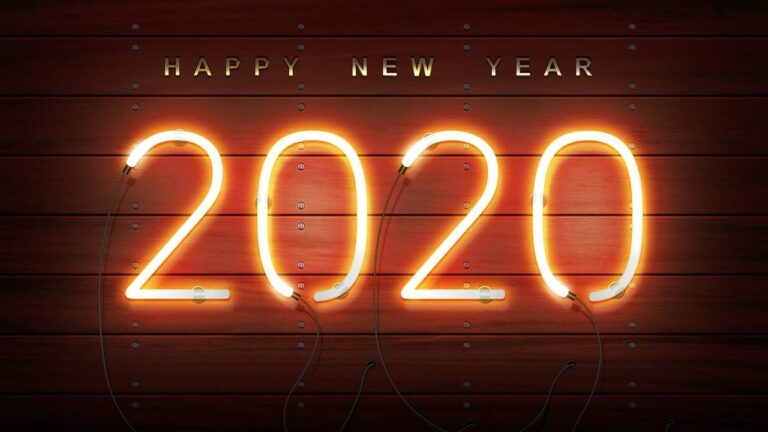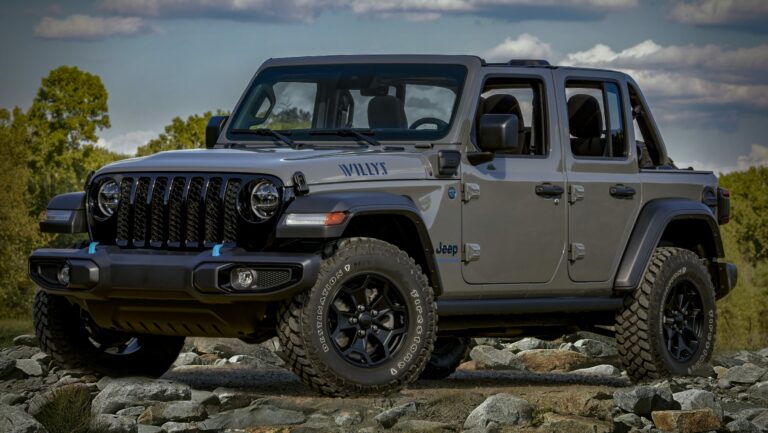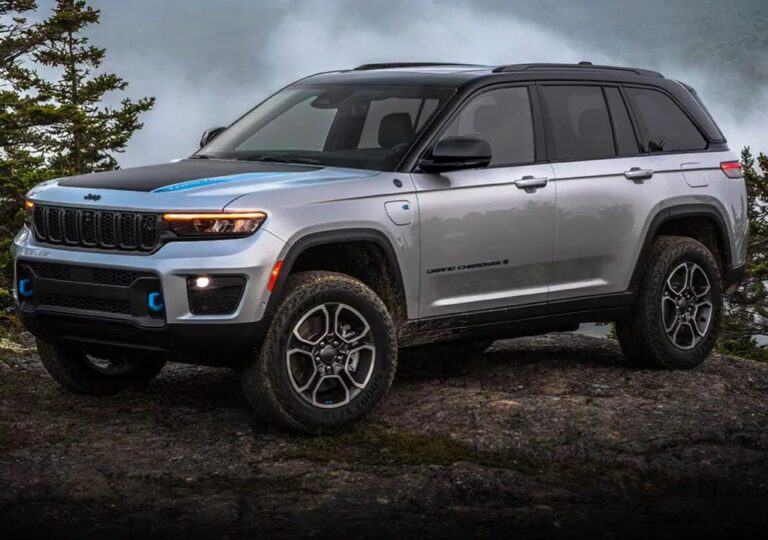How Much Does It Cost To Regear Jeep Wrangler: A Comprehensive Guide
How Much Does It Cost To Regear Jeep Wrangler: A Comprehensive Guide jeeps.truckstrend.com
For many Jeep Wrangler owners, the journey of customization often leads to larger tires, lift kits, and heavy off-road accessories. While these modifications dramatically enhance the vehicle’s appearance and off-road prowess, they inadvertently throw off one crucial aspect of its performance: the factory gearing. This often leads to a common question: "How much does it cost to regear a Jeep Wrangler?"
Regearing, or changing your Jeep’s axle gear ratio, is a fundamental modification that restores your vehicle’s power, efficiency, and drivability after installing larger tires or adding significant weight. It’s not merely an upgrade; it’s a necessary recalibration to ensure your engine operates within its optimal RPM range, preventing strain on the drivetrain and maximizing performance on and off the pavement. Understanding the costs involved, the components required, and the installation process is key to making an informed decision.
How Much Does It Cost To Regear Jeep Wrangler: A Comprehensive Guide
What is Regearing and Why is it Necessary for Your Jeep Wrangler?
At its core, regearing involves replacing the ring and pinion gears inside your Jeep’s front and rear differentials with new ones that have a different tooth count ratio. This ratio dictates how many times your driveshaft spins for one rotation of your wheel. A higher numerical gear ratio (e.g., 4.56 or 5.13) means the engine spins more times for each tire rotation, providing more torque at the wheels.
Why is this necessary?
- Larger Tires: When you install tires significantly larger than stock (e.g., going from 30-inch to 35-inch or 37-inch tires), the effective gear ratio decreases. This means your engine has to work much harder to turn those bigger, heavier wheels. It’s like trying to start a bicycle in its highest gear – sluggish acceleration, constant downshifting, and a noticeable loss of power, especially uphill or at highway speeds.
- Restored Performance: Regearing brings the effective gear ratio back into a more optimal range, compensating for the larger tire diameter. This restores lost low-end torque, improves acceleration, reduces the need for constant downshifting, and makes your Jeep feel more responsive and enjoyable to drive.
- Improved Fuel Economy (Relative): While larger tires inherently reduce fuel efficiency, proper gearing helps the engine operate more efficiently, often mitigating some of the fuel economy losses. An under-geared Jeep will constantly hunt for the right gear, keeping RPMs unnecessarily high and guzzling fuel.
- Reduced Drivetrain Strain: Running large tires with stock gears puts excessive stress on your transmission, torque converter, and engine. Regearing alleviates this strain, potentially extending the lifespan of these expensive components.
- Enhanced Off-Road Capability: Lower gearing provides better crawl control and more torque at low speeds, which is crucial for tackling challenging trails and obstacles.

Key Components of a Regear Project
To understand the cost, it’s essential to know what parts are involved in a regear:
- Ring and Pinion Gear Sets: These are the primary components. You’ll need two sets – one for the front axle and one for the rear. Popular aftermarket brands include Yukon Gear & Axle, Revolution Gear & Axle, Nitro Gear & Axle, and G2 Axle & Gear. The quality and brand significantly impact the price.
- Master Install Kits: These comprehensive kits include all the necessary consumables for a proper gear installation. This typically includes new bearings (pinion, carrier, side), races, shims, seals, a crush sleeve or solid spacer, and a new pinion nut. These components are crucial for setting the correct gear mesh and ensuring longevity.
- Differential Fluid: New gear oil is required after the installation and often after the break-in period.
- Carrier (Potentially): If you’re upgrading to a significantly different gear ratio (e.g., from 3.21 to 4.88) on certain axle types, your existing differential carrier might not be compatible with the new gear set. In such cases, a new open carrier or an aftermarket locker/limited-slip differential (LSD) that supports the new ratio will be required, adding to the cost.
- Optional Upgrades (Often Done Concurrently):

- Lockers/Limited-Slip Differentials: Many owners choose to install selectable lockers or LSDs while the axles are already disassembled for the gear swap, as it saves on labor. This significantly enhances off-road traction.
- Heavy-Duty Differential Covers: Aftermarket diff covers offer greater protection for your gears, increase fluid capacity for better cooling, and often feature a drain plug for easier maintenance.

Factors Influencing the Cost of Regearing
The total cost to regear a Jeep Wrangler can vary widely, typically ranging from $1,500 to $3,000+ for parts and labor, excluding optional upgrades like lockers. Several factors contribute to this variability:
-
Labor Costs (The Biggest Variable): This is often the largest portion of the total cost.
- Shop Rates: Labor rates vary significantly by region and shop. Reputable off-road or drivetrain specialists tend to have higher hourly rates but also possess the specialized tools and expertise required for a precise gear setup.
- Complexity: Installing gears is a meticulous process that requires precise measurements (pinion depth, backlash) and specialized tools. It’s not a simple bolt-on job. Expect 4-8 hours of labor per axle, depending on the shop and the specific axle type.
- Experience: An experienced technician can perform the job efficiently and correctly the first time, preventing costly issues like gear whine or premature wear.
-
Parts Costs:
- Brand and Quality: Premium gear brands (Yukon, Revolution, Nitro) generally cost more but offer superior strength and quiet operation. Budget brands might save a few dollars upfront but could lead to noisy gears or premature failure.
- Axle Type: Jeep Wranglers come with various axle types (e.g., Dana 30, Dana 44, Dana 60). Dana 30 components are typically less expensive than Dana 44, and heavy-duty Dana 60 components are the most costly. The front and rear axles often require different gear sets and kits.
- Master Install Kits: These range from $150-$250 per axle. Don’t skimp on these; quality bearings and shims are critical.
- New Carrier: If your desired gear ratio necessitates a new carrier (because your current one doesn’t support the new ratio), this adds $200-$500 per axle.
-
Jeep Model and Year: While the principles are the same, slight variations in axle designs across different Wrangler generations (TJ, JK, JL) can influence parts availability and labor time.
-
Geographic Location: Labor rates and even parts availability can vary by state or even within different parts of the same city. Shops in high cost-of-living areas typically charge more.
-
Additional Services:
- Locker/LSD Installation: Installing lockers adds the cost of the unit itself ($700-$1,200+ per axle) but often minimal additional labor since the axles are already open.
- Differential Covers: Heavy-duty diff covers range from $100-$250 each.
- Fluid Changes: Factor in the cost of high-quality gear oil. Some shops include the initial fill, but you’ll likely need to change it after the break-in period.
DIY vs. Professional Installation
DIY Installation:
- Pros: Significant savings on labor costs. You gain a deeper understanding of your Jeep’s mechanics.
- Cons: Requires specialized tools (dial indicators, bearing presses, crush sleeve removers, etc.), a high level of mechanical aptitude, and meticulous attention to detail. Errors in setting backlash or pinion depth can lead to gear whine, premature wear, or catastrophic failure, costing far more in the long run. Most DIYers won’t have the warranty on their labor that a professional shop offers.
- Recommendation: Unless you have extensive experience with differential work and the proper tools, professional installation is highly recommended for regearing. This is a precision job that impacts the long-term health of your drivetrain.
Professional Installation:
- Pros: Expertise, specialized tools, and often a warranty on parts and labor provide peace of mind. Ensures the job is done correctly, minimizing the risk of costly failures.
- Cons: Higher upfront cost due to labor charges.
- Recommendation: For the majority of Jeep owners, entrusting a reputable off-road or drivetrain shop with regearing is the wisest choice.
The Regearing Process: What to Expect
When you take your Jeep to a professional shop for regearing, here’s a general overview of the process:
- Assessment and Consultation: The shop will discuss your current setup (tire size, modifications), your driving habits (daily driver, hardcore off-roader), and recommend the optimal gear ratio for your needs.
- Disassembly: The Jeep will be lifted, wheels removed, and the differential covers, axles shafts, and existing gear sets will be removed from both the front and rear axles.
- Installation of New Components: The new ring and pinion gears are installed, along with all the new bearings, shims, and seals from the master install kit.
- Precision Setup: This is the most critical step. Technicians use specialized tools to meticulously set the pinion depth and backlash (the small gap between the ring and pinion gears). This ensures proper tooth contact, quiet operation, and maximum lifespan.
- Reassembly: Axle shafts are reinstalled, new differential covers (if applicable) are bolted on, and new gear oil is added.
- Break-in Procedure: The shop will instruct you on a crucial break-in period (typically 500 miles). This involves avoiding heavy acceleration, towing, or extended highway speeds, and allowing the gears to cool periodically. A fluid change after the break-in period is often recommended or required.
Tips for Saving Money (Without Compromising Quality)
While regearing is an investment, here are some tips to manage the cost:
- Get Multiple Quotes: Contact several reputable off-road shops in your area for detailed estimates. Compare not just the total price but also what’s included (parts brands, warranty).
- Choose the Right Ratio: Don’t over-gear unless you truly need it for extreme off-roading. A more moderate ratio might save a small amount on parts (depending on availability) and ensure better highway manners.
- Bundle Services: If you’re planning other axle-related upgrades like installing lockers, consider doing them at the same time as the regear. This often saves on redundant labor costs.
- Buy Quality Parts: While tempting to save a few bucks on cheaper gear sets, the long-term cost of noisy gears or premature failure due to low-quality components far outweighs initial savings.
- Understand Your Needs: Be honest about your driving style and intended use. An aggressive ratio for rock crawling might be overkill and inefficient for a daily driver.
Potential Challenges and Solutions
- Gear Whine: A common issue if the gears are not set up correctly. This requires returning to the shop for adjustment. Choosing a reputable installer is key to avoiding this.
- Premature Wear/Failure: Incorrect setup can lead to accelerated wear. Following the break-in procedure diligently is crucial.
- Hidden Costs: Ensure your quote is comprehensive and includes all parts, labor, and fluids. Ask about the cost of a new carrier if it might be needed.
- Downtime: Your Jeep will be at the shop for 1-2 days for the installation, plus the subsequent break-in period. Plan accordingly.
Practical Advice and Actionable Insights
If you’ve installed 33-inch tires or larger on your Jeep Wrangler, regearing is not an option; it’s a necessity for optimal performance and longevity. Investing in quality parts and, more importantly, a skilled and experienced installer, will pay dividends in the long run. Do your research, ask questions, and don’t hesitate to spend a bit more for peace of mind and a properly functioning drivetrain.
Regear Cost Table: Estimated Breakdown for Jeep Wrangler
Please note that these are estimated ranges and can vary based on brand, quality, specific Jeep model, geographic location, and shop labor rates. Always get a detailed quote from your chosen installer.
| Component / Service | Estimated Cost Range (USD) | Notes |
|---|---|---|
| Parts (Front & Rear) | ||
| Ring & Pinion Gear Sets (x2) | $500 – $900 | For both front and rear axles. Varies by brand (Yukon, Revolution, Nitro, G2). |
| Master Install Kits (x2) | $300 – $500 | For both front and rear axles. Includes bearings, seals, shims, crush sleeves/spacers. |
| Differential Fluid | $50 – $100 | High-quality gear oil for initial fill and potentially post-break-in change. |
| Professional Labor | ||
| Labor for Front Axle | $400 – $700 | Highly skilled, precision work. Includes setup. |
| Labor for Rear Axle | $400 – $700 | Similar to front axle. |
| Total Estimated Base Cost (Parts + Labor) | $1,650 – $2,900+ | This is the core cost for regearing both axles without optional upgrades. |
| Optional Upgrades (if applicable) | ||
| New Open Carrier (if needed, x1-2) | $200 – $500 per axle | Required if your current carrier doesn’t support the new gear ratio. |
| Selectable Locker (x1) | $700 – $1,200+ | Per axle (e.g., ARB Air Locker, Eaton E-Locker). Adds significant traction. |
| Limited Slip Differential (x1) | $400 – $800 | Per axle (e.g., Truetrac). Provides improved traction without being fully locked. |
| Heavy-Duty Diff Cover (x1) | $100 – $250 | Per axle. Offers increased protection and fluid capacity. |
| Total Estimated Cost (with 2 Lockers) | $3,000 – $5,500+ | Includes core regear + two lockers + potential carrier upgrade. |
Note: Some shops might quote a flat rate that includes parts and labor. Always ask for a detailed breakdown.
Frequently Asked Questions (FAQ)
Q1: How long does it take to regear a Jeep Wrangler?
A1: Professionally, the actual installation typically takes 1-2 full days. However, shops often need to order parts, so the total process from drop-off to pick-up might be a few days to a week.
Q2: What gear ratio should I choose for my Jeep Wrangler?
A2: This depends primarily on your tire size and intended use.
- 33-inch tires: 4.10, 4.56
- 35-inch tires: 4.56, 4.88
- 37-inch tires: 4.88, 5.13, 5.38 (especially for heavier rigs or dedicated off-roaders)
- Consider engine (3.6L Pentastar, 2.0L Turbo, 3.8L, 4.0L), transmission (manual vs. automatic), and if you plan to tow or do heavy off-roading. Consult with a specialist.
Q3: Do I need to regear both axles?
A3: Yes, absolutely. For a 4WD vehicle, both the front and rear axles must have the exact same gear ratio. Failing to do so will cause severe drivetrain binding and damage when 4WD is engaged.
Q4: What is the break-in period for new gears?
A4: Typically, 500 miles. During this period, avoid heavy throttle, hard acceleration, towing, and sustained highway speeds. It’s recommended to drive for about 15-20 minutes, then let the differential cool down for an hour before continuing. A fluid change is often recommended or required after this break-in period.
Q5: What are the signs that I need to regear my Jeep?
A5: Common signs include:
- Loss of power and sluggish acceleration after installing larger tires.
- Constant downshifting, especially on inclines or at highway speeds.
- Engine RPMs are too low at highway speeds (lugging) or too high (buzzing).
- Poor fuel economy (relative to what you’d expect with larger tires).
- Transmission constantly hunting for the right gear.
Q6: Will regearing void my Jeep’s warranty?
A6: Modifying drivetrain components can potentially void the factory warranty on related parts (axles, transmission, engine). Check with your dealership or review your warranty terms. Aftermarket part manufacturers often offer their own warranties on the gears themselves.
Conclusion
Regearing your Jeep Wrangler is a significant investment, but it’s a critical one for any owner running larger tires or carrying substantial weight. While the initial cost, typically ranging from $1,500 to $3,000+ for parts and labor, might seem steep, it pays dividends in restoring your Jeep’s performance, protecting your drivetrain components, and enhancing your overall driving and off-roading experience. By understanding the components involved, the factors influencing cost, and the importance of professional installation, you can confidently embark on this essential upgrade, transforming your Jeep into the capable and enjoyable vehicle it was meant to be.





